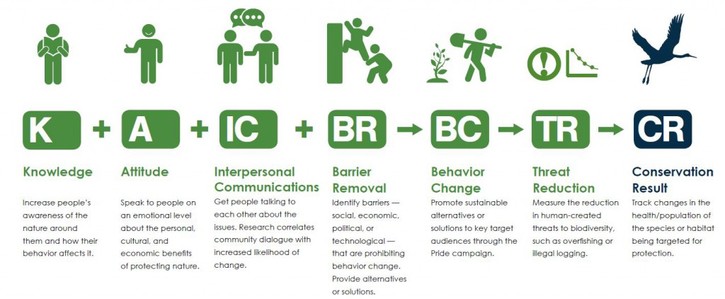by GREG ACCIAIOLI & SURAYA AFIFF

‘If an attractive girl in an advertisement could sell beer, why couldn’t a lovable parrot sell conservation?’ This declaration, by one of the founders of the transnational conservation organisation, Rare, encapsulates a unique approach to conservation.
Rare, headquartered in Arlington, Virginia, originated from a frustrated campaign to save the threatened Saint Lucia Parrot in the Southern Antilles of the Caribbean. The initial campaign depended upon the ‘traditional’ strategy of designing and distributing a poster to save the bird. This approach yielded few results. The conservationists then turned to the techniques of social marketing – marketing intended to change individuals’ attitudes in regard to social issues – in order to educate local people regarding the value of conservation.
The big question is whether campaigns using social marketing are sufficient to confront the major issues of conservation. To provide at least a partial answer to this question we examine the progress and outcomes of one of Rare’s signature Pride campaigns in the context of Central Kalimantan.
Social marketing in conservation
After the success of the new social marketing approach, conservationists who had been involved joined with other activists in 1973 to form Rare. The organisation is committed to upscaling these techniques for conservation across the globe, with a regional office in Bogor, where programs covering both Indonesia and Malaysia are administered. The major vehicle Rare uses to carry out such transformations is via ‘Pride’ campaigns, intended to appeal to people on an emotional level by promoting pride in their local environment.
The campaigns use techniques such as creating mascots to provide a focus for changing attitudes. They produce t-shirts, buttons, stickers, hats, key rings, badges and other marketing materials displaying the image of the mascot along with conservation messages. At face-to-face meetings with local community members, a person dressed as the mascot parades back and forth while videos showing endangered species are shown, skits are performed and messages are delivered to promote behaviours that will save the species and the environment needed to sustain it. As the Rare policy document ‘Conservation on a human scale’ proclaims, ‘Conservation ultimately comes down to people – their behaviors toward nature, their beliefs about its value, and their ability to protect it without sacrificing basic life needs.’
Rare’s focus upon changing individuals’ knowledge, attitudes and behaviours is embedded in its Theory of Change – the basis of its campaigns. Rare summarises this theory in the formula ‘an increase in knowledge plus a change in attitude, interpersonal communication and barrier removal leads to behavior change, which leads to threat reduction, and, ultimately, a conservation result’:
Inside Indonesia for more